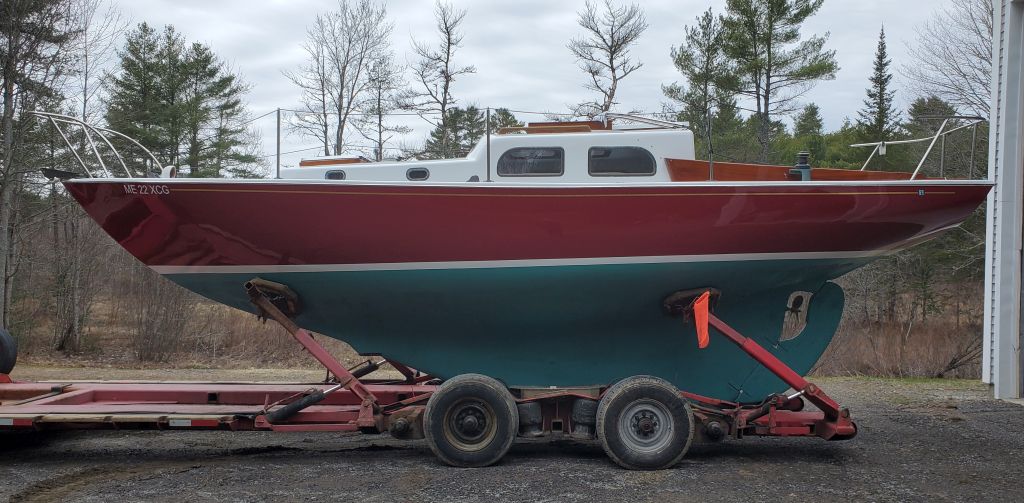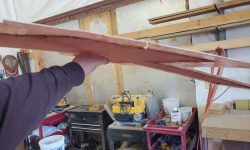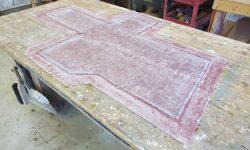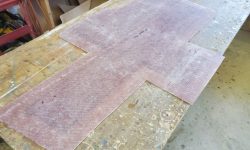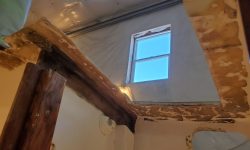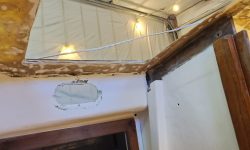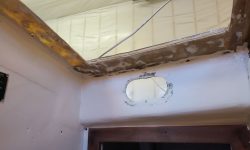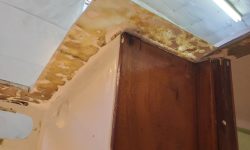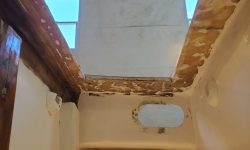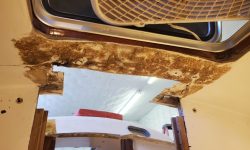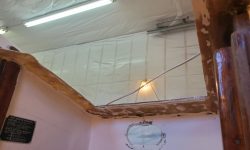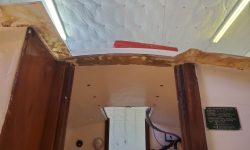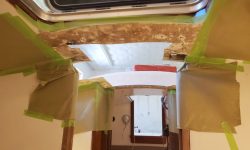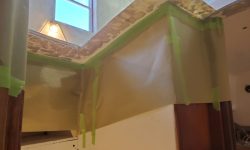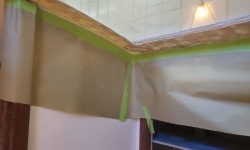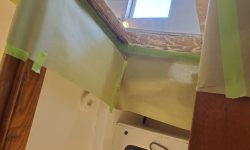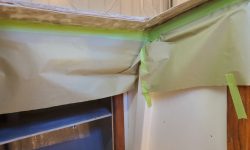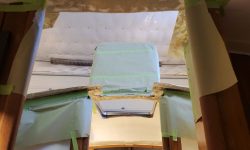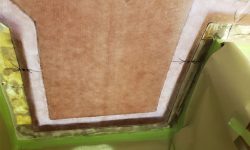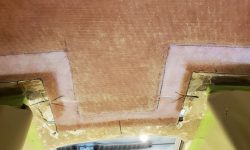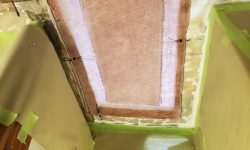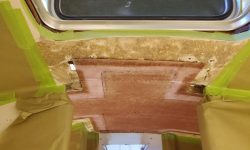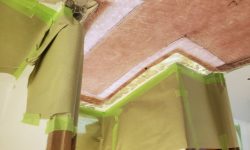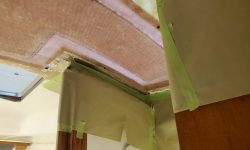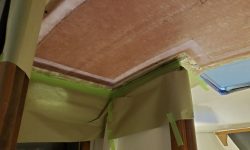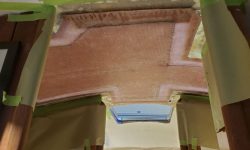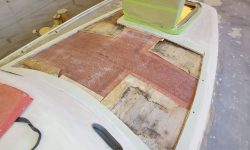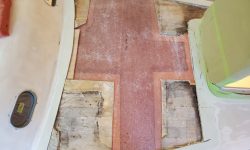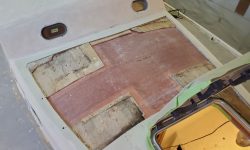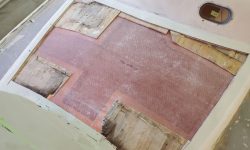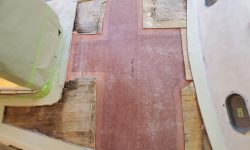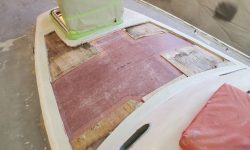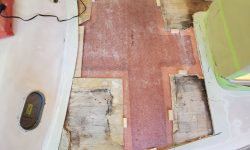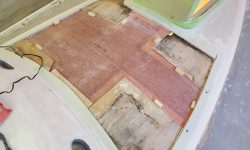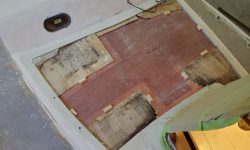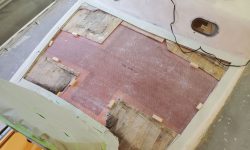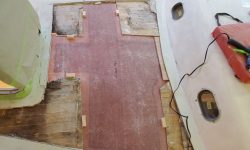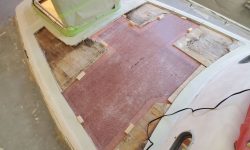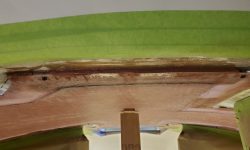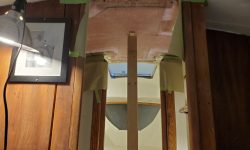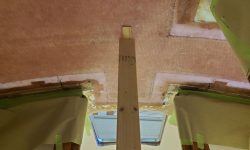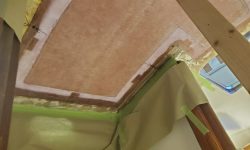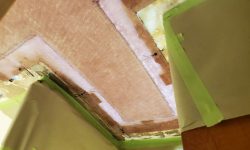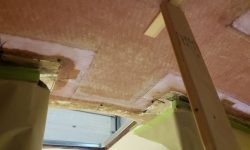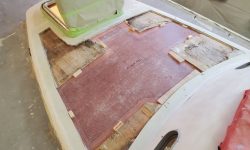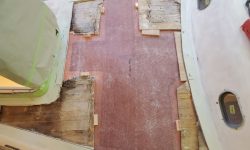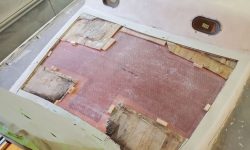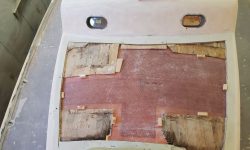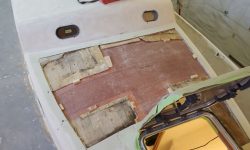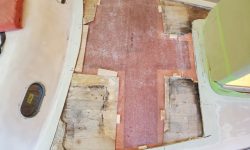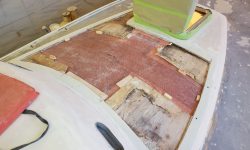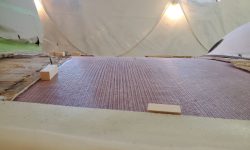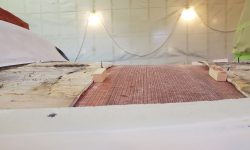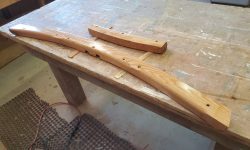January 11, 2022
Lyra Phase 2-11
Tuesday
Getting a much later start than intended after an early morning appointment ran long, I began with some preparations to the new deck/overhead panel. The extra layer of material had stiffened the panel appreciably, and now it was just the right level of flexible: Stiff enough to barely droop, yet easily bendable into the sort of curve required. I gave the new fiberglass a light sanding to prepare it for the next steps.
In the boat, I removed the paint from the overhead around the perimeter of the repair. The overhead, otherwise known as the deck’s inner skin, was quite thin and delicate in many areas, and far from smooth, so I had to balance how far I wanted to sand it with doing undue damage to the existing edges, so I didn’t worry about a few spots of paint left behind in the hollows. There was plenty of good bonding area, and later, once the underside was done, I planned to glass over the entire repair from above as well, to really tie things together before the core.
Afterwards, I cleaned up and installed masking below the overhead to protect the immediately adjacent, and freshly painted, interior surfaces from collateral damage during the fiberglass work just ahead.
I dry-fit the panel, overlapping it about an inch all around; it was easy to see the overlap since the translucent fiberglass allowed the edges to be clearly ascertained from below. The panel bent easily and accurately into place with gentle pressure in the center, and I held it temporarily with a wooden brace. I used a few (four) screws to secure the panel through the remnants of the deck above, which held it securely, and would clamp it during the final installation. The screw holes would later be covered by the final tabbing from below and new glass from above. I traced the outline of the panel and marked the screw locations to help me align the panel properly when it was time to epoxy it in place. At the aft center of the panel, I slipped in a scrap of 3/8″ balsa to space the panel correctly to allow new core to be installed above. as this was the area that had been core-free and sloppily glassed from beneath.
As an added alignment guide, from above I hot-glued little wooden blocks in place around the perimeter so the panel could only fit one way.
Now, removing the panel, I made final preparations then installed the panel permanently in a bed of epoxy adhesive all around the perimeter, or at least where applicable; in several areas, mainly to starboard, remnants of the old fiberglass repair remained, and the panel wouldn’t–and shouldn’t–fit tightly here since these sections were too high. When all was said and done and the panel was fully installed from beneath, I planned to cut and grind away the final old repair work from above, clearing the way for new work. I secured the panel with the four screws, added a support in the center to hold the arch securely, and found I needed another screw or two to help pull the panel tightly into the epoxy, mainly at the forward end in the v-berth. At the aft end, where I’d spaced the panel intentionally down from the adjacent glass, I installed some of the adhesive from inside to fill the gap and hold the panel there once the temporary core bits were removed.
Pleased to have the deck filled in once more, I spent the final part of the day finish-sanding the mast beams, then applying the first coat of varnish to all sides of both pieces.
Total time billed on this job today: 4.5 hours
0600 Weather Observation: 0°, clear. Forecast for the day: Sunny, 8°


